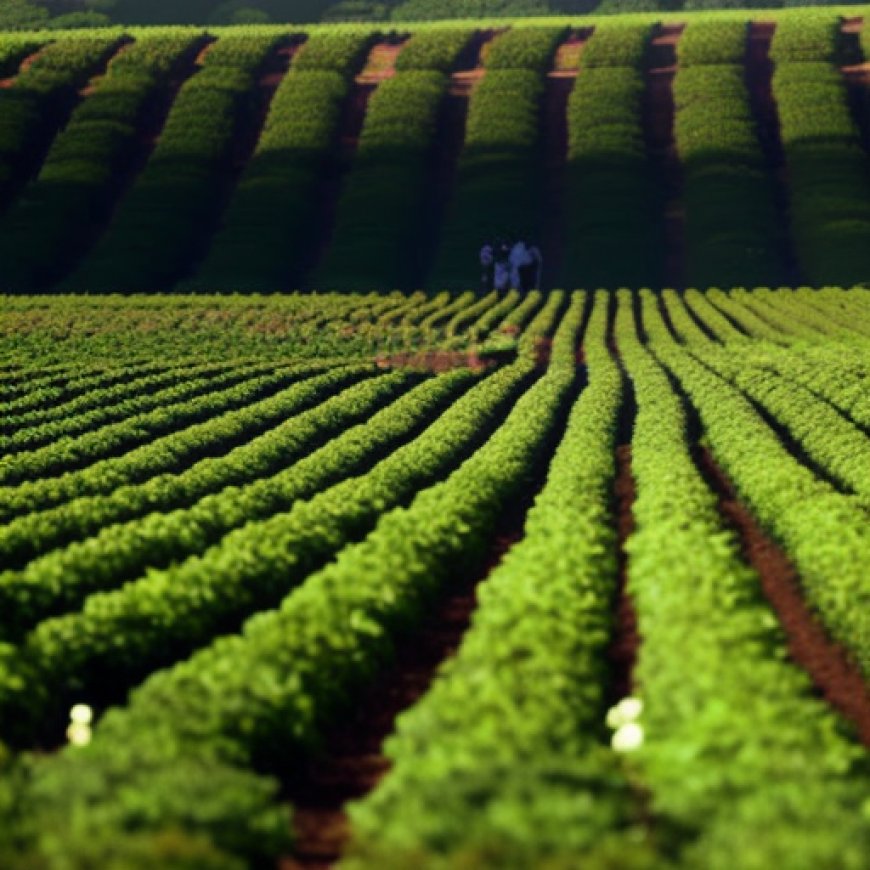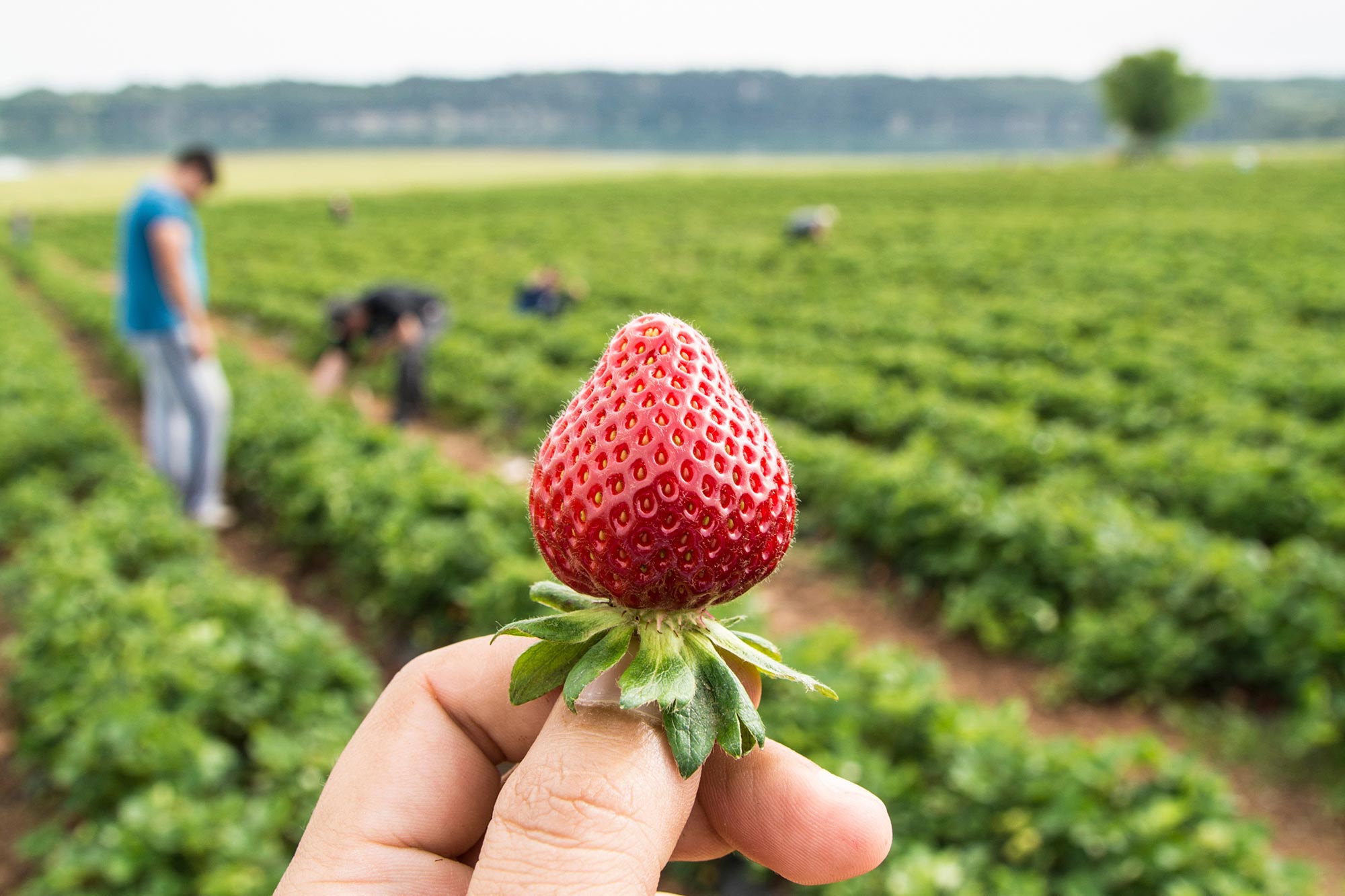Bitter Harvest: The Dirty Little Secret of Strawberry Fields
Bitter Harvest: The Dirty Little Secret of Strawberry Fields SciTechDaily


Plastic Mulch in California’s Strawberry Farms Contributes to Soil Plastic Pollution

A recent study reveals that plastic mulch, commonly used in California’s strawberry farming, contributes significantly to soil plastic pollution. Despite its benefits, plastic mulch fragments are difficult to entirely remove and negatively impact soil health over time. Researchers are seeking solutions with manufacturers to address these environmental concerns.
Introduction
Researchers have identified an alarming source of plastic pollution in Californian strawberry farms. Plastic mulch, a common tool in promoting strawberry growth, has been found to shed significant amounts of plastic fragments into the soil. This phenomenon adversely affects soil qualities and calls into question the long-term sustainability of plastic mulch usage. These findings likely have global implications for plastic use in agricultural production.
Plastic Mulch and its Benefits
Plastics, such as polyethylene, are increasingly used in agriculture, for example in polytunnels. Plastic mulch films are extensively used in agriculture, where they provide a range of benefits. They are tucked in around the base of the plant, which can help control weeds and pathogens, reduce water evaporation, and prevent soil splashing on fruit (which is particularly important for strawberries).

Researchers have discovered that plastic mulch, widely used to support the growth of strawberries in California, sheds significant amounts of plastic fragments into the soil. These fragments negatively impact soil quality and challenge the sustainability of plastic use in agriculture. The problem is exacerbated by the fact that even meticulous plastic mulch removal leaves fragments adhered to the soil, resulting in plastic accumulation over time.
Plastic Mulch Pollution and Soil Accumulation
The mulch is applied in rows and then removed after the crop’s seasonal production is complete. However, even careful land stewardship by farmers does not ensure all the plastic is removed because fragments get left behind and adhere to the soil during removal. After decades of annual plastic mulch application and removal, the researchers observed the accumulation of plastic fragments within farm soils, even in really well-managed fields. The researchers looked for macroplastics, which are plastic pieces more than 5mm across.
Extent of Plastic Pollution
Ekta Tiwari continued “We carried out a systematic survey of strawberry fields after the seasonal removal of these plastic film. We found that the distribution was fairly uniform. On field surfaces alone, we found up to 213,500 macroplastic particles per hectare. That doesn’t include subsurface particles, which we did not survey. In addition, we are currently analyzing the same soil samples for microplastics, which are smaller particles, less than 5mm across; these are not yet included in our findings.”
Note: A hectare is 10,000 square meters. For comparison, an average professional soccer playing pitch is around 7,100 square meters and an American football field is 5,350 square meters.
Impact on Soil Quality
Most of the particles are polyethylene (identified using Fourier transform infrared spectroscopy). In preliminary findings, the researchers found that as the levels of macroplastic pollution increased, soil moisture content, microbial respiration, and plant-available nitrogen declined. Dr. Tiwari added “The plastic mulch provides benefits, but at the expense of long-term soil quality. It’s difficult and expensive to remove these particles from the soil, so once they are there they can stay there indefinitely.”
Sustainable Development Goals (SDGs)
The issue of plastic mulch pollution in strawberry farming aligns with several Sustainable Development Goals (SDGs), including:
- SDG 2: Zero Hunger
- SDG 3: Good Health and Well-being
- SDG 6: Clean Water and Sanitation
- SDG 12: Responsible Consumption and Production
- SDG 13: Climate Action
- SDG 15: Life on Land
Conclusion and Future Research
The presence of plastic pollution in California’s strawberry farms raises concerns about the long-term sustainability of plastic mulch usage in agriculture. The researchers are working with manufacturers to find solutions to address these environmental concerns. Alternatives to polyethylene mulches, such as biodegradable plastic mulches or natural mulches like straw, exist but come with economic costs. The study provides baseline data to understand the extent of plastic pollution in the U.S. agriculture system and can help improve land management practices by assessing the biog
SDGs, Targets, and Indicators
1. SDGs Addressed:
- SDG 12: Responsible Consumption and Production
- SDG 15: Life on Land
2. Specific Targets:
- SDG 12.4: By 2020, achieve the environmentally sound management of chemicals and all wastes throughout their life cycle, in accordance with agreed international frameworks, and significantly reduce their release to air, water, and soil in order to minimize their adverse impacts on human health and the environment.
- SDG 15.1: By 2020, ensure the conservation, restoration, and sustainable use of terrestrial and inland freshwater ecosystems and their services, in particular forests, wetlands, mountains, and drylands, in line with obligations under international agreements.
3. Indicators:
- Indicator for SDG 12.4: Amount of waste generated per capita and per economic activity.
- Indicator for SDG 15.1: Proportion of important sites for terrestrial and freshwater biodiversity that are covered by protected areas, by ecosystem type.
Explanation:
1. The issues highlighted in the article are connected to SDG 12 (Responsible Consumption and Production) and SDG 15 (Life on Land). SDG 12 focuses on sustainable production practices and reducing the release of harmful substances into the environment. SDG 15 aims to protect and restore terrestrial ecosystems and promote sustainable land use.
2. Based on the article’s content, the specific targets that can be identified are SDG 12.4 and SDG 15.1. SDG 12.4 addresses the environmentally sound management of chemicals and wastes, while SDG 15.1 focuses on the conservation and sustainable use of terrestrial ecosystems.
3. The article mentions or implies indicators that can be used to measure progress towards the identified targets. For SDG 12.4, the indicator could be the amount of waste generated per capita and per economic activity. For SDG 15.1, the indicator could be the proportion of important sites for biodiversity that are covered by protected areas.
Table: SDGs, Targets, and Indicators
| SDGs | Targets | Indicators |
|---|---|---|
| SDG 12: Responsible Consumption and Production | SDG 12.4: By 2020, achieve the environmentally sound management of chemicals and all wastes throughout their life cycle, in accordance with agreed international frameworks, and significantly reduce their release to air, water, and soil in order to minimize their adverse impacts on human health and the environment. | Amount of waste generated per capita and per economic activity. |
| SDG 15: Life on Land | SDG 15.1: By 2020, ensure the conservation, restoration, and sustainable use of terrestrial and inland freshwater ecosystems and their services, in particular forests, wetlands, mountains, and drylands, in line with obligations under international agreements. | Proportion of important sites for terrestrial and freshwater biodiversity that are covered by protected areas, by ecosystem type. |
Behold! This splendid article springs forth from the wellspring of knowledge, shaped by a wondrous proprietary AI technology that delved into a vast ocean of data, illuminating the path towards the Sustainable Development Goals. Remember that all rights are reserved by SDG Investors LLC, empowering us to champion progress together.
Source: scitechdaily.com

Join us, as fellow seekers of change, on a transformative journey at https://sdgtalks.ai/welcome, where you can become a member and actively contribute to shaping a brighter future.







